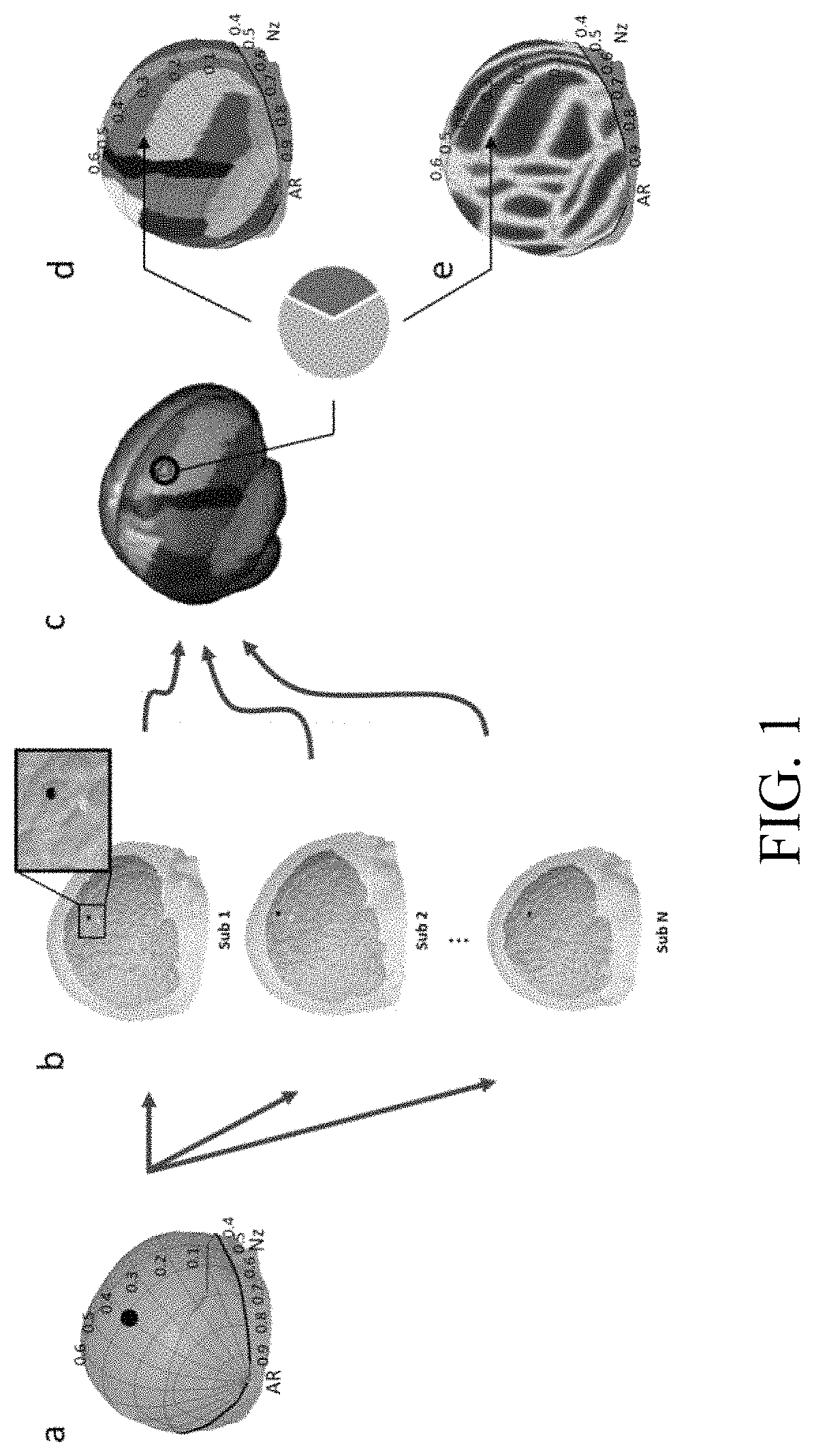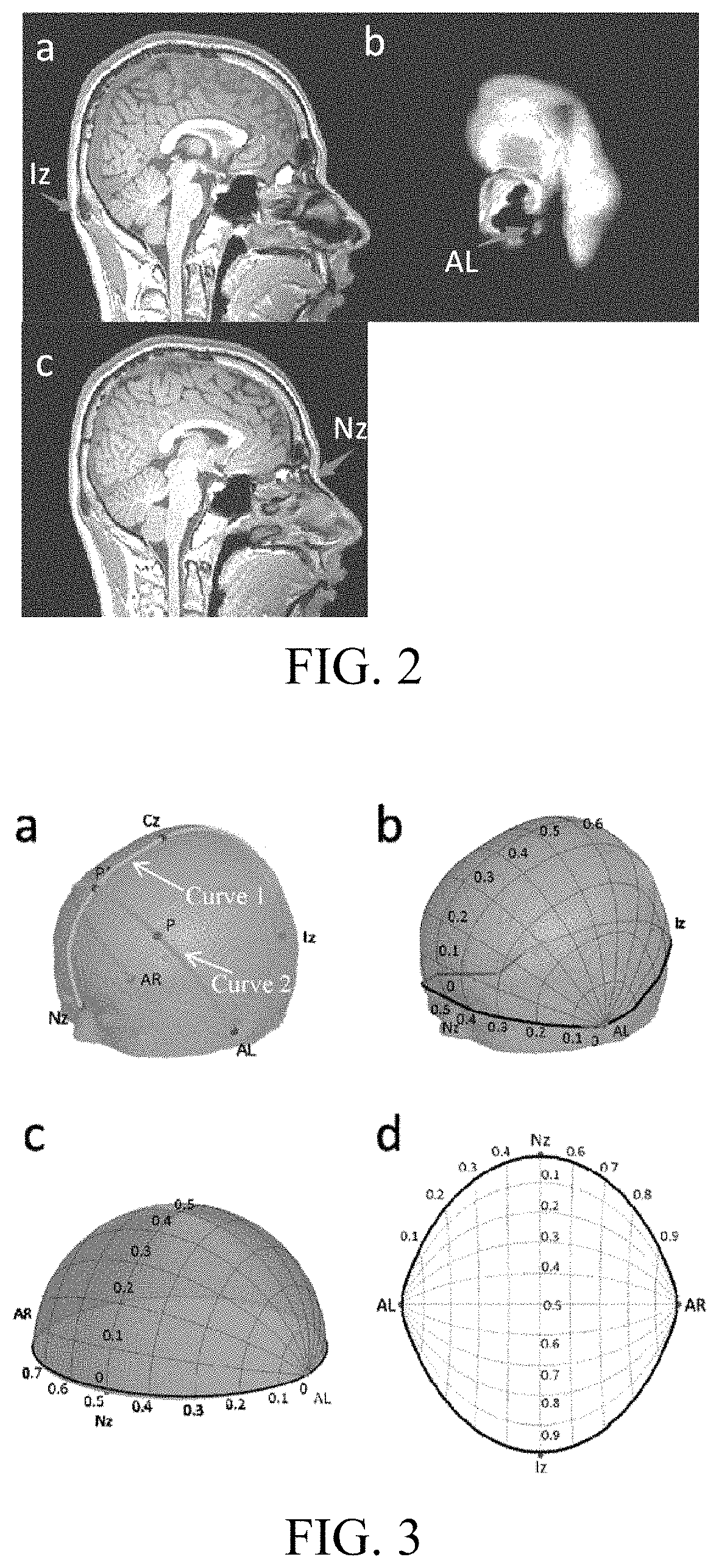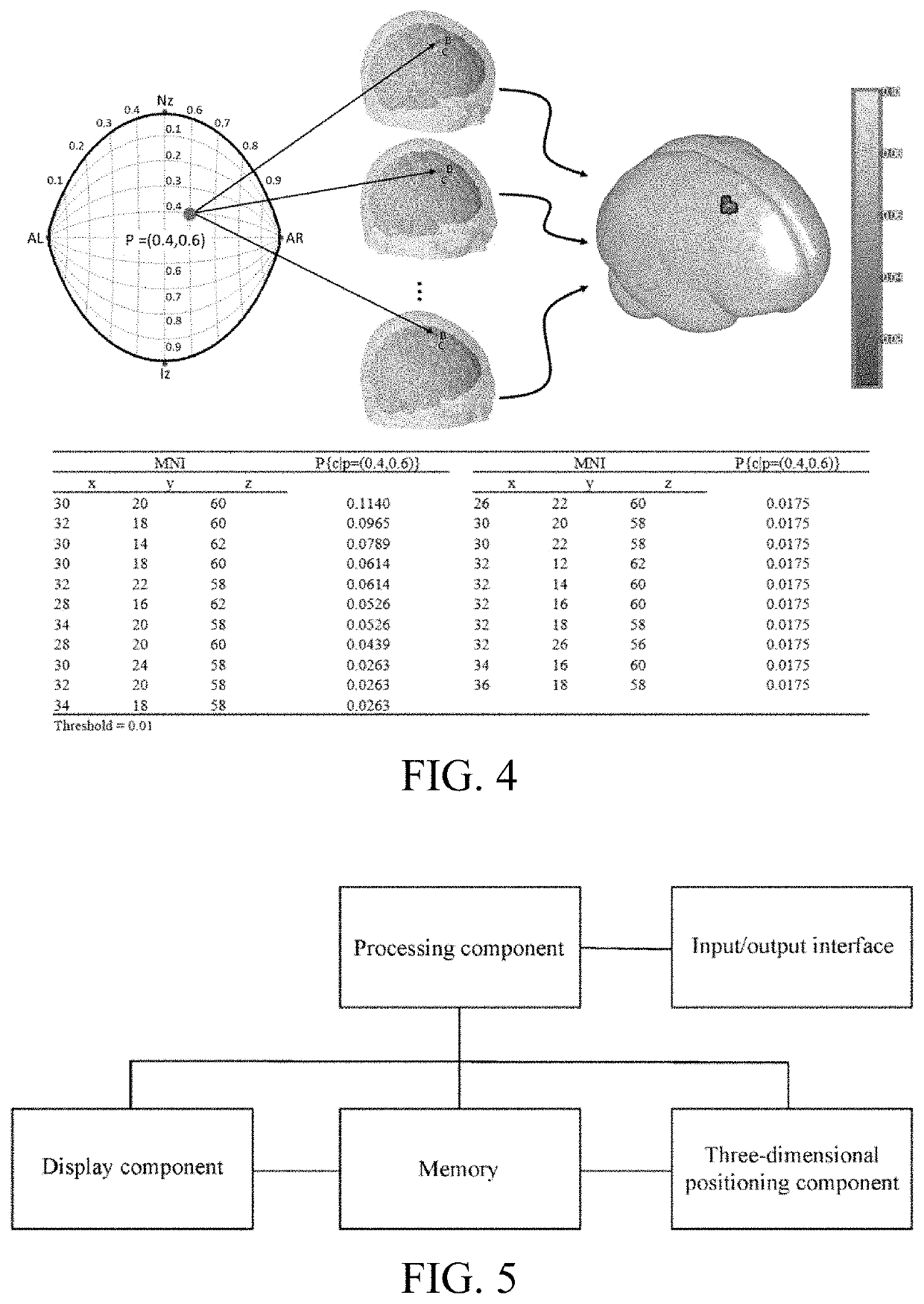Individual-characteristic-based transcranial brain atlas generation method, navigation method, and navigation system
a transcranial brain and individual characteristic technology, applied in the field of individual-characteristic-based transcranial brain atlas generation method, can solve the problems of difficult positioning of optimal imaging or stimulation site on individual scalp surface, inconsistent experimental, conflicting conclusions, etc., and achieve the effect of improving the coverage accuracy of near-infrared measurement optrodes and improving the sensibility of detecting task-induced brain activity
- Summary
- Abstract
- Description
- Claims
- Application Information
AI Technical Summary
Benefits of technology
Problems solved by technology
Method used
Image
Examples
Embodiment Construction
[0052]Technical content of the present invention is further described in detail below with reference to the accompanying drawings and specific embodiments.
[0053]As described above, separation between a cranial surface space visible to a transcranial imaging apparatus and an intracranial brain space invisible to the transcranial imaging apparatus is one of biggest challenges in effectively applying a transcranial brain mapping technology. To resolve a corresponding problem of the two spaces, the present invention first proposes a concept of a transcranial brain atlas (TBA for short). The transcranial brain atlas is a brain atlas established on a scalp surface. According to the transcranial brain atlas, invisible intracerebral atlas information is projected onto a visible scalp surface (particularly, upper scalp surface), so that a researcher or a doctor may directly use these pieces of atlas information related to the brain structure and the brain function.
[0054]Specifically, in the ...
PUM
 Login to View More
Login to View More Abstract
Description
Claims
Application Information
 Login to View More
Login to View More - R&D
- Intellectual Property
- Life Sciences
- Materials
- Tech Scout
- Unparalleled Data Quality
- Higher Quality Content
- 60% Fewer Hallucinations
Browse by: Latest US Patents, China's latest patents, Technical Efficacy Thesaurus, Application Domain, Technology Topic, Popular Technical Reports.
© 2025 PatSnap. All rights reserved.Legal|Privacy policy|Modern Slavery Act Transparency Statement|Sitemap|About US| Contact US: help@patsnap.com



